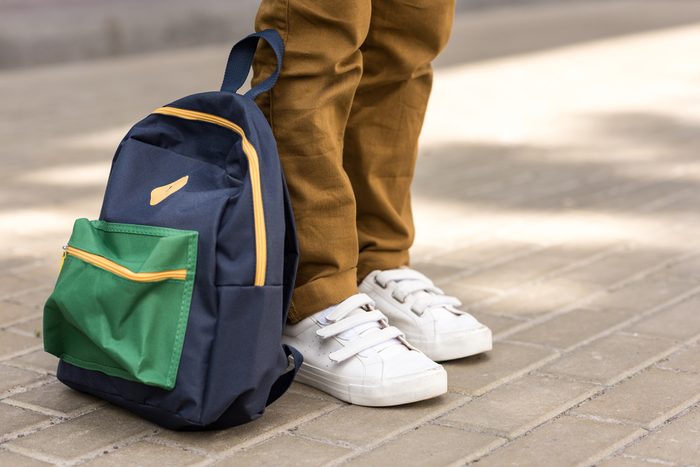Signs Your Kid’s Backpack Might Be Too Heavy
Updated: May 31, 2022

Today's backpacks are heavier than ever, thanks to kids lugging around textbooks and laptops not to mention sports uniform and equipment, water bottles, and all those seeming ubiquitous keychain collections. Follow these suggestions to prevent backaches and more.
While kids might not complain about back and neck aches, if they’re carrying around too much in their backpack daily, it could have significant repercussions on their back and neck health over time. Arjun S. Sebastian, MD, orthopedic surgeon at Mayo Clinic in Rochester, Minnesota weighs in with some advice.
How much is too heavy?
“Generally, a child’s backpack should weigh no more than 10 percent of the child’s weight,” Dr. Sebastian reports. (For example, a 60-pound child shouldn’t carry more than 6 pounds in their backpack and a 100-pound child shouldn’t lug more than 10 pounds.) He notes this may be fairly light for an elementary school-aged child, but it is still an important guideline to follow. Weigh your kid’s backpack on your regular scale to get an exact measurement. To lighten the load, ask your child’s teacher if there are extra copies of larger textbooks so one can be kept at home and the extra one could be used in the classroom or check to see if there are digital copies of the textbook available.
What physical signs can a parent or teacher watch for?
A student who is leaning forward or pulling on the straps while walking might be struggling with a backpack that is too heavy, Dr. Sebastian says. Some kids are more restless and fidgety than others, so it’s not a guaranteed giveaway, he notes.
How should your kid wear their backpack?
To reduce stress on the neck and back, a backpack needs to be worn correctly, especially if it’s weighed down with books. A student needs to wear both straps (as the backpack is designed to be worn) and the straps need to be fitted appropriately, which means they are tight enough so the backpack isn’t hanging down too low yet loose enough that they’re not digging into the child’s skin, Dr. Sebastian says. You should check the fit monthly as kids grow fast and seasonally when they change up their wardrobe.
What is the sizing guideline?
With so many fun options these days, it’s tempting to go for style. But the size of the backpack should be your main concern, says Dr. Sebastian. “Generally, a backpack should not be wider than the child or hang below his or her waist by more than two or three inches,” he reports. Many companies offer multiple sizes of backpacks, so check online if your store doesn’t carry the one you need.
What physical features are ideal?
Dr. Sebastian notes the importance of padded straps, adding, “but a padded back is also important to prevent the contents from protruding into the back.” He also suggests choosing a backpack that has compression straps for stabilizing the contents inside the bag and one that offers multiple compartments to help distribute the load, which is helpful for improving the ergonomics of the backpack. A waist strap can also help if your child is really struggling, he says.
What posture is best?
Here’s another reason your child should stand up straight: According to Dr. Sebastian, posture is important, especially when the backpack is on the heavier side. “It’s always ideal for a student to stand up straight and not have to hunch forward because of their backpack.” You can save your child’s back—and ease your wallet—by taking a hard pass on these back-to-school supplies that are a waste of money.
What about kids with spine conditions?
Being careful not to overload backpacks is even more important for kids with certain health conditions. “Children with orthopedic conditions of the spine such as scoliosis or chronic back pain should make more of an effort to avoid heavier loads,” reports Dr. Sebastian.
Get ready to have the best school year ever with these secrets from parents of straight-A students.
Every product is independently selected by our editors. If you buy something through our links, we may earn an affiliate commission.
